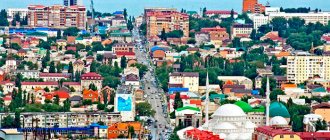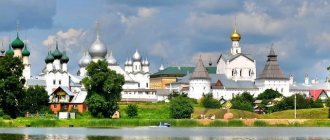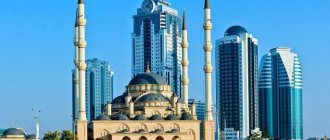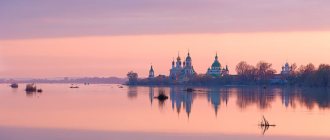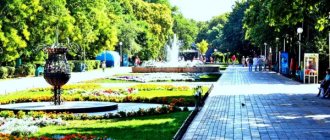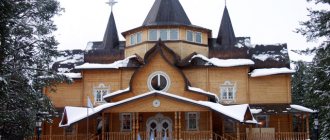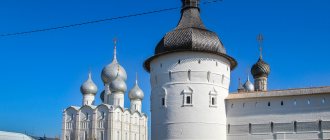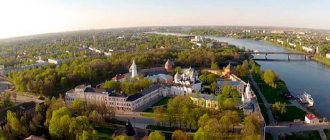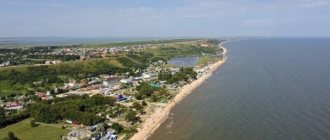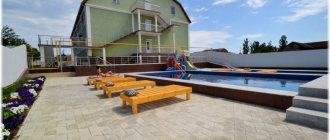For other places with the same name, see Turan (disambiguation).
City in Tuva, Russia
| Turan Turan | |
| City [1] | |
| Other transcription(s) | |
| • Tuvinian | Turan |
| View of Turan | |
| Location Turan | |
| Turan Location Turan Show map of Russia Turan Turan (Republic of Tyva) Show map of the Republic of Tuva | |
| Coordinates: 52°08'N 93°54'E / 52.133°N W. 93.900°E / 52.133; 93 900 Coordinates: 52°08'N 93°54'E. / 52.133 ° N W. 93.900°E / 52.133; 93 900 | |
| A country | Russia |
| Federal subject | Tuva [1] |
| Administrative region | Piy-Khem district [1] |
| City of district subordination | Turan [1] |
| Based | 1885 |
| City status from | 1945 |
| Height | 860 m (2,820 ft) |
| population size (2010 Census) [2] | |
| • General | 4981 |
| • Evaluate (2018) [3] | 4879 ( -2% ) |
| Administrative status | |
| • Capital from | Piy-Khem district [1], city of Turan of district subordination [1] |
| Municipal status | |
| • Municipal district | Piy-Khem municipal district [4] |
| • Urban village | Urban settlement Turan [4] |
| • Capital from | Piy-Khem municipal district [4], urban settlement Turan [4] |
| Timezone | UTC+7 (MSK+4[5]) |
| Postal code [6] | 668510, 668518 |
| OKTMO ID | 93635101001 |
Turan population
| 2010 Census | 4 981 [2] |
| 2002 Census | 5 598 [7] |
| 1989 Census | 5 976 [8] |
| 1979 Census | 5,139 [9] |
Turan
(Russian: Turan, Tuvan: Turan) is a city and administrative center in the Piy-Khemsky District in the Republic of Tyva, Russia, located 70 km (43 mi) northwest of Kyzyl, the capital of the republic. As of the 2010 census, its population was 4,981. [2]
Links[edit]
Notes[edit]
- ^ abcdefgh Resolution #1648 ZP-1
- ^ abc Federal State Statistics Service (2011). “All-Russian Population Census 2010. Volume 1" [All-Russian Population Census 2010, vol. 1]. All-Russian Population Census 2010 [All-Russian Population Census 2010]
. Federal State Statistics Service. - "26. The size of the permanent population of the Russian Federation by municipalities as of January 1, 2022". Federal State Statistics Service. Retrieved January 23, 2022.
- ^ a b c d e Law No. 268 VH-1
- "On the Calculation of Time". Official Internet portal of legal information
. June 3, 2011. Retrieved January 19, 2022. - Post office. Information and computing center of OASU RPO. ( Post office
).
Search for postal service objects ( postal Search for objects
) (in Russian) - ↑
Federal State Statistics Service of Russia (May 21, 2004).
“The population of Russia, the constituent entities of the Russian Federation as part of federal districts, urban settlements, settlements, settlements is 3 thousand or more people” [Population of Russia, its federal districts, federal districts, districts Urban settlements, rural settlements - administrative centers and rural settlements with a population of over 3,000] (XLS). All-Russian Population Census 2002
. - “All-Union Population Census of 1989. The current population of union and autonomous republics, autonomous regions and districts, territories, negative phenomena, urban settlements and villages. All-Union Population Census of 1979. National composition of the population by regions of Russia” [All-Union Population Census of 1979. Ethnic composition of the population by regions of Russia] (XLS). All-Union Population Census of 1979 [All-Union Population Census of 1979]
.
1979 - via Demoscope Weekly
(website of the Institute of Demography of the State University - Higher School of Economics.
The city of Turan in Tyva
Economic and geographical position of the city of Turan The city of Turan, which became the first city of the Republic of Tyva, is located on the Turan River in the Turan-Uyuk depression and is the administrative center of the Piy-Khem kozhuun. The federal Yenisei highway passes through it. The capital of the republic, the city of Kyzyl, is located in a southern direction from Turan, 70 km. The nearest railway station in Abakan is 345 km away. The surroundings of Turan are steppe landscapes. The name of the city speaks about this - translated from the Turkic language it means salt marsh. History of the city of Turan The settlement of Turan was founded in 1885 by Russian settlers, industrialists and merchants from Siberia Safyanov, Medvedev, Vavilin, Zheleznov and others. In the upper reaches of the Yenisei, two enterprising people Safyanov and Zheleznov discovered large gold mines. It was the Safyanovs, who settled in Turan, who brought the spirit of Russian culture here and built friendly relations with the Tuvans living here. Even a hundred years later in the 90s, at a time of heightened sense of nationalism in the republic, when Russians abandoned what they had acquired and fled, the situation in Turan was quite peaceful. With the money of the Safyanovs, a school was built in Turan, which became the first school in the republic. The history of the city is connected with the development of the revolutionary movement and the Civil War. The son of the Safyanov family, Innokenty, and the adopted son of a local aristocrat, Mongush Buyan-Badyrgy, created a national revolutionary party, and its first congress was held in the city of Turan. At the beginning of the 20s, after the revolutionary liberation movement, the construction of industrial enterprises and residential buildings began. In the spring of 1930, peasants united into a collective farm called “Red Plowman”. Since 1937, having received the status of a city, Turan has been developing as an agricultural, industrial, commercial, transport and cultural city in the central zone of the Republic of Tyva. During the Great Patriotic War, residents of Turan volunteered to go to the front and helped soldiers with clothes and food. The history of Turan forestry began in 1946, known for its labor exploits and tragic events during perestroika. But the foresters managed to get out of all difficult situations with honor. Later, in 1959, a music school and library were opened. On the occasion of the 50th anniversary of the founding of the “Red Plowman” collective farm, the doors of the trade union House of Culture “Kolos” open.
Economy of the city of Turan An industrial plant that produces upholstered and wooden furniture for living rooms, dining rooms, children's rooms, offices and summer cottages is of great importance for the city's economy. The woodworking industry is also well developed. In the Piy-Khem region they grow grain crops: wheat, oats, barley and engage in meat and wool animal husbandry. Architecture and sights of the city of Turan . The cityscape of Turan is a modern development of low buildings, wide and long streets, along which larches are planted. In Turan you can visit the national museum of local lore, the Church of St. Innocent of Irkutsk. At the entrance from the Krasnoyarsk Territory there is a white stupa - a suburgan “symbol of the mind of Buddha”. They say that they store all the information about humanity, its spiritual and cultural development. Even if the world is destined to perish, the memory of people will remain in these buildings directed into the sky. In the Turanian environs there are archaeological sites: ancient mounds and rock paintings. Population of the city of Turan The population of the city of Turan consists of approximately half Russian and Tuvan residents. A very small percentage are Khakassians, Armenians, and Ukrainians.
Population
| Population | ||||||||
| 1959[4] | 1970[5] | 1979[6] | 1989[7] | 1998[8] | 2000[8] | 2001[8] | 2002[9] | 2006[8] |
| 5646 | ↘4539 | ↗5139 | ↗5976 | ↗6000 | ↘5700 | →5700 | ↘5598 | ↘5300 |
| 2007[8] | 2008[8] | 2009[10] | 2010[11] | 2011[12] | 2012[13] | 2013[14] | 2014[15] | 2015[16] |
| →5300 | →5300 | ↗5304 | ↘4981 | ↘4968 | ↘4911 | ↗4951 | ↘4873 | ↗4874 |
| 2016[17] | 2017[18] | 2018[19] | 2019[20] | 2020[21] | 2021[1] | |||
| ↗4898 | ↗4922 | ↘4879 | ↗4881 | ↗4903 | ↗4916 | |||
As of January 1, 2022, in terms of population, the city was in 1072nd place out of 1116[22]cities of the Russian Federation[23].
National composition
According to the 2002 census, of the 5,598 residents of the city, Russians made up 58.97% (3,301 people), Tuvans - 36.80% (2,060 people), Khakass - 0.70%, Armenians - 0.63%, Ukrainians - 0 .55%[24].
Whatever you call the boat, that’s how it will float
Changing the name of an organization is not as harmless as it might seem at first glance. If until now the Turkic Council has focused on the cultural and humanitarian sphere, the new name is a step towards a more binding structure, the participants of which could be bound by “mechanisms for rapid decision-making,” which Turkish Foreign Minister Mevlüt Çavuşoğlu emphasized at the summit. Another pitfall inherent in the name is associated with the peculiarities of the Turkish language, in which it is read as the Organization of Turkish States, giving an unambiguous hint as to who exactly calls the tune in this ethnically motivated association, already referred to in part of the expert community as the “United States of Turkic peace."
© mfa.gov.tr
Turkish Foreign Minister Mevlut Cavusoglu at the summit.
When asked why Ankara needs a new organization status, Turkish political scientist Kerim Has answers: “Erdogan is very interested in expanding Turkey’s zone of influence. In Central Asia, where the Turkic peoples who are brotherly to the Turks live, this is the easiest and most logical thing to do. Secondly, Ankara needs as much leverage as possible on Moscow. By increasing its influence in countries bordering Russia, Turkey gains a strong position in negotiations with the Kremlin on all issues. And there are a lot of them. This includes Syria, Libya, various economic projects, and the situation in the South Caucasus.”
In this light, Erdogan’s pushing for the idea of creating a “Turkic NATO”, united by the common Turkish command of the “Army of Great Turan”, which, as Turkish Ambassador to Azerbaijan Ismail Alper Cosgun explained, should surpass even the North Atlantic Alliance in terms of the degree of unification of its armed forces, no longer looks like a project.
And although a number of Turkic states of Central Asia are skeptical about this issue, Noblesse oblige, the new position of members of an organization not so much cultural as political, obliges. Moreover, Turkey is about to have an ally in the Organization of Turkic States who will listen to its every half-hint: Recep Erdogan proposed in the near future to make the unrecognized “Turkish Republic of Northern Cyprus” a full member of the organization, which will automatically lead to its recognition by all member states to the former Turkic Council. In addition, after unconditional political support and the sending of mercenaries during last year's conflict in Nagorno-Karabakh, support for an alliance with Turkey in Azerbaijan has skyrocketed, and now it will be very difficult for Ilham Aliyev to pursue an independent policy in this country.
© tccb.gov.tr
Recep Tayyip Erdogan proposed making the unrecognized “Turkish Republic of Northern Cyprus” a full member of the organization.
From “I’m in charge here” to territorial claims against neighbors
Observing the methods by which the national ideologists of the “Great Turan” from the Russian autonomies achieve their goals, it is worth paying attention to their difference in approaches. In Tatarstan, in addition to the hostile attitude towards Russians, heavily implicated in the fact of the capture of Kazan by Ivan the Terrible, almost everywhere there is a displacement of all non-Tatars from local government bodies, from the civil service, from any administrative positions.
At the same time, claiming the title of “beloved wife of the Turkish Sultan,” Tatar nationalists are actively promoting the fact that the Bashkirs, Chuvashs, and Mishars are the same Tatars, but artificially torn off from the body of the united Tatar people by the cursed Muscovite colonialists. Up to the point where Tatar historians equated the semi-nomadic way of life of the Bashkir cattle breeders with the usury and commercial entrepreneurship of Tatar traders. Naturally, Volga Bulgaria and the Tatars inhabiting it are declared the true heirs of the Golden Horde, as both the Kazakhs and even Turkish nationalists consider themselves to be. “Evidence” is sought that the Tatars on the territory of Bashkiria were not tenants who came only after the death of the Kazan Khanate, but the same primordial patrimonial landowners as the Bashkirs, and the tribal genealogies and epics of the Bashkirs, confirming their originality and other origins, are simply ignored.
Bashkir nationalists chose a slightly different path. Not only do they not want to hear anything about the unity of the Tatar and Bashkir peoples due to historical circumstances (for example, it was the Tatar tenants who were the most cruel punitive forces during the Bashkir uprisings of the 18th century), any discussion of Internet publications relating to territories that were once lands historical settlement of the Bashkirs, become a place for hatred towards Russians to spill out. Of course, the most exalted individuals are famous for this, but it is significant that just a few years ago such outbursts of interethnic hatred not only did not receive mass approval, but were also extremely rare.
The second direction is the demand for “the return of the Bashkir national territories taken from the Bashkirs by the colonialists.” Moreover, the first fruits of these efforts have already appeared. In early November, a decision was made to return to Bashkortostan the territory on which the native village of the Bashkir national hero Salavat Yulaev was located, transferred to the Chelyabinsk region in 1934.
© ufa1.ru
The article, published on the Bashkir regional resource UFA1.ru, caused a strong reaction from those with national concerns.
Moreover, not only Bashkir nationalists are participating in this campaign. After this decision, an article about this was published on the Bashkir regional resource UFA1.ru, owned by the media holding Hirst Shkulev Media, which caused a strong reaction from those of national concern. Here are just some of the comments to her: “It’s high time to return the Bashkir lands”, “So take the entire Ashinsky district, we still get treatment, and study, and go shopping, and go to work in Ufa”, “The Chelyabinsk region actually does not need this village, and the entire far west of the region. The Ashinsky district is completely oriented toward Ufa, and this is quite natural, since back in the 19th century it was part of Bashkiria.”
A few days later, inspired by the reaction, employees of the holding, whose owner, in addition to Mr. Shkulev, is the American Hearst Corporation, which once regularly published articles by Nazi bosses , duplicated the article on their Chelyabinsk resource 74.ru. And after that, they happily published the results of the discussion, in which there was already a demand to transfer the Argayash region of the region, in which the Bashkirs make up the majority of the population, to Bashkortostan: “The Argayash region also belonged to Bashkiria. So the question arises, in 1934, on what basis did the authorities give the Bashkir land to the Chelyabinsk region? Also where Salavat Yulaev was born - the village of Tikeevo. Unfortunately, in 1934 it was impossible to challenge the decision; the dictator would not have allowed it anyway.”
And there are many similar territorial claims to the Chelyabinsk, Orenburg, and Samara regions, which play into the hands of Turkish programs to create the “Great Turan” in general and the “Turkic Corridor” in particular. But the most unpleasant thing is that this campaign was also joined by media outlets considered Russian, but partly owned by foreign investors, often very odious, and promoting an agenda directed against Russia, against the federal center, which is what the regional resources of Viktor Shkulev’s holding are famous for.
© tccb.gov.tr
The drift of members of the Organization of Turkic States, some of which are members of the CIS, SCO, CSTO and even EurAsEC, towards Turkey will only intensify.
Further and further and further
Do the changes in the status of the Turkic Council that occurred at the VIII summit of the heads of Turkic states pose a danger for Russia? Yes, they represent it as any steps to realize imperial ambitions that could affect its national interests and territorial integrity. Indeed, now that the status of members of the Organization of Turkic States has become more binding, the drift of the Turkic states, some of which are members of the CIS, SCO, CSTO and even EurAsEC, towards Turkey will only intensify.
And the implementation of the “humanitarian” program to replace the Cyrillic alphabet with the Turkish Latin alphabet, which the Anadolu news agency admires so much, will contribute to an even greater separation of the Central Asian republics from Russia in the information, cultural and humanitarian spheres. After all, we should not forget that the translation into Latin of the Turkic languages of the peoples of Russian national autonomies is the next stage in the plans of the ideologists of the “Great Turan from the Mediterranean to the Laptev Sea” of transforming the Tatars, Bashkirs, Yakuts, Buryats into “Tatar, Bashkir, Yakut, Buryat Turks."

